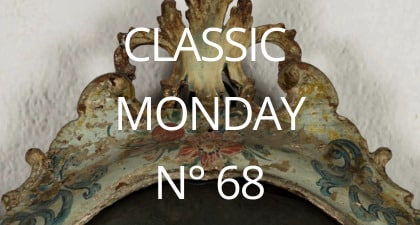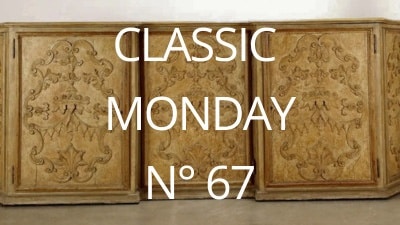
Origins of Lacquerwork
The decorative technique associated with the use of lacquer originated in Ancient Asia and arrived in Europe via the Silk Road. It gained popularity at the beginning of the 18th century at the court of the Sun King in France and, shortly after, in Italy.
Development of Lacquerwork in Venice
One of the first Italian cities interested in exploring this decorative method was Venice. Here, a particular type of lacquerwork developed, initially aiming to imitate oriental models on tempera, which was later combined with thin layers of resins and spirit on Swiss pine wood, stucco, plaster, and sometimes fine canvas.
Decorative Varieties in Lacquerwork
As mentioned in the previous article, lacquerwork was suitable for simpler functional furniture and the decoration could vary in complexity: some pieces were decorated with simple pastel colors, and in more fortunate cases, enhanced with thin gilded frames running along the entire structure.
Others were adorned with painted representations of birds or bouquets of flowers placed on the front panels or at the corners of the structure, while larger surfaces featured paintings of Arcadian scenes or oriental gardens populated by fantastical figures depicted in celebrations very similar to those attended by the Venetian nobility.
This city distinguished itself from other styles due to the work of the depentor or lacquer artists who didn’t limit themselves to creating miniatures reproducing design patterns, but as true painters, they modified small details in the preparatory drawings that made each piece of furniture in the boiserie unique.
Thus, the flowers and ribbons in shades of blue, orange, and pink present on the frame of the small pastel blue baroque mirror with rocaille motifs that we discuss today take slightly different forms, making each flower distinct from the others.
During the mid-18th century, the constant demand for this type of furniture led artisans to speed up production, creating items in what is known as “poor lacquer”, characterized by a uniform base with details featuring scenes printed in color or black and white, then finished with colored tempera that were cut out and glued onto the furniture’s outer surface, as well as on hidden doors and drawers.
This solution allowed even simpler, more linear furniture to be adorned, while still achieving a strong visual effect.








